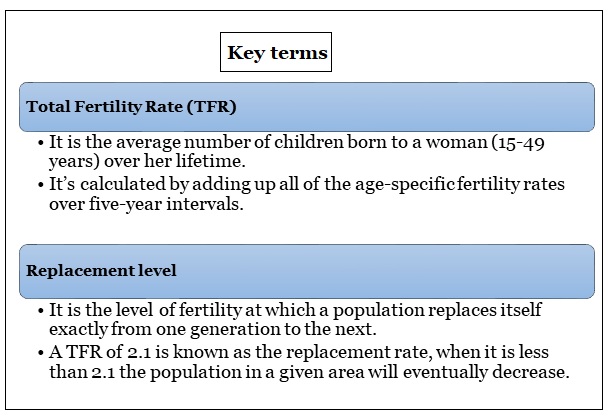900 319 0030
enquiry@shankarias.in
Recent lancet study reveals that by 2050, 1 in 5 Indians will be a senior citizen while there will be fewer younger people to take care of them.

Both India and China account for more than a third of world’s population, the ageing population will increase the dependency ratio.
|
Steps taken by India to combat population |
|
|
Global experimental policies to boost fertility |
|
References